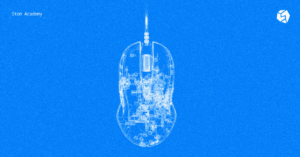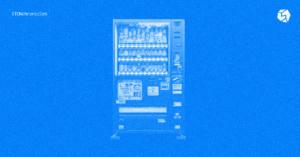Many people believe that buying something as simple as a movie ticket or an airline ticket online, or on-chain using the decentralized network, is more of an unnecessary complication. The logic is that tickets and other similar products and services have been traditionally purchased off-chain since time immemorial and there is no need to break with tradition.
However, logic and traditional thinking have little to do with a progressive outlook that is based on the capabilities offered by innovation. The power of the blockchain and what it has to offer in terms of revolutionizing or even disrupting traditional concepts has yet to be evaluated. The true selling point of utilizing on-chain passes for conducting traditional operations like ticket purchases lies in more than just the reminiscent convenience of doing so like on any theater website. What the transition to an on-chain paradigm grants is insight based on compilations of user data that cannot be implemented in the Web2 domain.
The long-term benefit is the ability of the blockchain to rely on the data pileup provided by on-chain apps to totally redefine the user experience by identifying individual patterns to better match product and service offerings. This approach not only saves time and budgets, but also improves the overall browsing and shopping experience, which translates far beyond the traditional movie ticket buying scenario.
The design of blockchain space will be completely redesigned with the advent of Web3 and the necessary modules that can make data buildup possible. In this material, we will explore how that can happen and the benefits that on-chain apps will bring into the everyday lives of users.
The Vision
In the modern interpretation of the blockchain, a user is a blockchain wallet with a unique identifier that conducts transactions. These wallets exist as on-chain addresses that interact with other on-chain applications. The wallet thus acts as a carrier of information within the blockchain. This, in turn, means that the blockchain, including all the networks operating under that term, are, in fact, large repositories of information – untapped information that can be utilized for a variety of purposes.
Should the information stored in on-chain applications across networks be unified under a universal protocol or approach, then it will become of value for developers and service providers as a source of data and insights into user behavior. Further analysis and segmentation of the data will allow the identification of so-called superusers, influencers, patterns of behavior, and other valuable stepping stones vital for tailoring product and service offerings. The more information – the more meaningful connections can be established and the higher the quality of the matches as a result.
Superusers in this case will play a vital role, as they will act as anchors for identifying potentially viable and predictable user behavior. These users are more active and exhibit higher levels of activity on-chain. Though this is less than an ideal approach for generalizing such behavior across all other users, the fact remains that most user behavior remains untraceable even on the blockchain, or is scarce at best.
The blockchain can help change that by giving complete transparency of user behavior and the associated information flows. Among the activities that on-chain behavior can be evaluated based on are:
- Likes in social media and messengers;
- Subscriptions;
- Purchases of merchandise;
- NFT collections;
- QR code scans;
- Website browsing history
- Social media posts.
Though fragmented at best on their own, if compiled into a coherent and holistic picture of a user’s behavior, these elements help create a profile that can be used to evaluate preferences and thus better match ads and other offerings. The blockchain acts as the framework for such a map to be built, using the elements of user behavior as map keys for analysts, largely automated ones built on AI, to create user profiles.
The Prospects
There have not been too many Web3 applications that have successfully been fielded in the last few years precisely due to the question of user behavior tracking. Users are still apprehensive and skeptical of such applications that record their behavior and personal details. However, some applications of this sort have allowed users to take command of their data and monetize it. The approach was also experimental and has not gained widespread recognition as yet.
The presence of the underlying cryptocurrency factor in such applications is also a hampering factor, since it boils the app down to a money-making instrument, which does not produce as much useful data as it should. The vision is to create a blockchain-based environment that is detached from cryptocurrencies and as the basis for their existence, and rather extends into Web3 as a natural and inherent building block. The native presence of on-chain apps with user behavior data tracking in the background is still some time away, but it does seem to be inevitable.
The challenge lies in identifying the products and features that users would actually find useful and would be willing to turn to in an on-chain environment. The presence of open source data is a vital element, since it is the basis of Web3 that transcends time and space in the virtual domain.
Most analysts and experts believe that such a moment of Web3 adoption on a large scale will arrive when a critical mass of data has been compiled to create a functional and attractive application capable of capturing user attention. At present, most apps in this domain are lacking innovation and are copycats of the same concepts with no long-term development prospects.
The User Benefits
Users are the core of Web3, the main players and the drivers of innovation through their adoption and demand. At present, cryptocurrencies play a vital role in attracting new users through promises of profit. The approach is obtuse and neglects the core intrinsic values that users can get access to if they turn to the blockchain for aid and forsake some everyday tasks that they are used to fulfilling off-chain.
Among the benefits that users gain by turning to on-chain apps are:
- Cryptocurrency use is cheaper, faster, more transparent, and more efficient than fiat in many cases;
- Secondary market creation is another benefit, which means that users will always have a place to sell unwanted on-chain products;
- Tracking and transparency are key points, since they immediately make the shortcomings of traditional systems apparent;
- Security is a paramount issue that has yet to be addressed in full in the blockchain space, but is already on a tier higher than in most centralized systems that are inherently subject to fraud and corruption;
- Global access is vital, since cryptocurrencies and Web3 are devoid of censorship and sanctions.
Allowing the blockchain to enable these benefits is what remains, and that step is the competence of developers, while the users should, in turn, encourage development by demanding said benefits.
The Takeaways
Web3 is still some time away from reaching a high enough degree of adoption, but it is clear that traction will be gained only when developers provide a breakthrough solution that can capture the attention of a large enough audience. That being said, the benefits of on-chain apps extend beyond the browsing experience of users into their everyday lives, since the blockchain is just as much a basis for online activities as it is a reflection of their off-chain reality.





